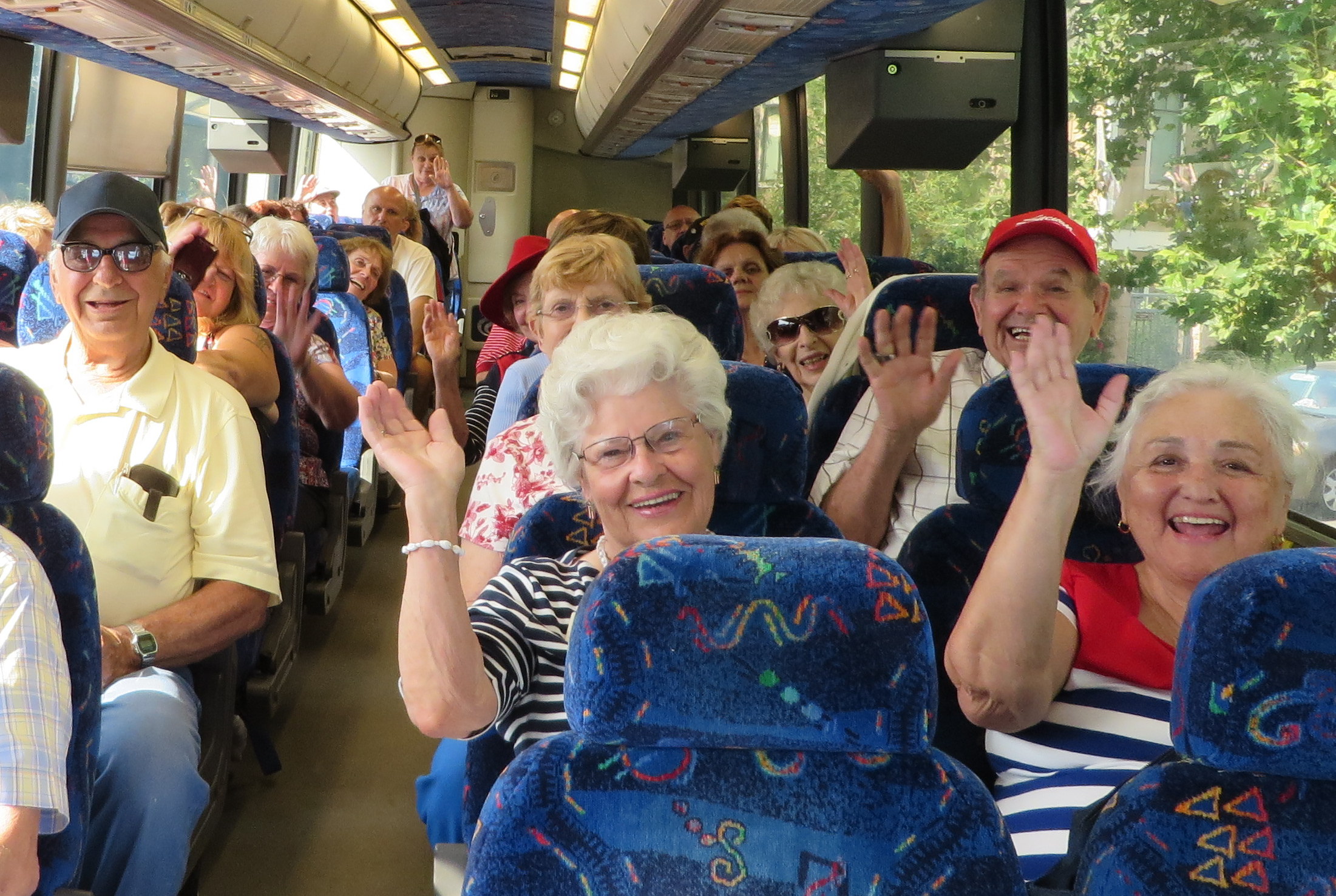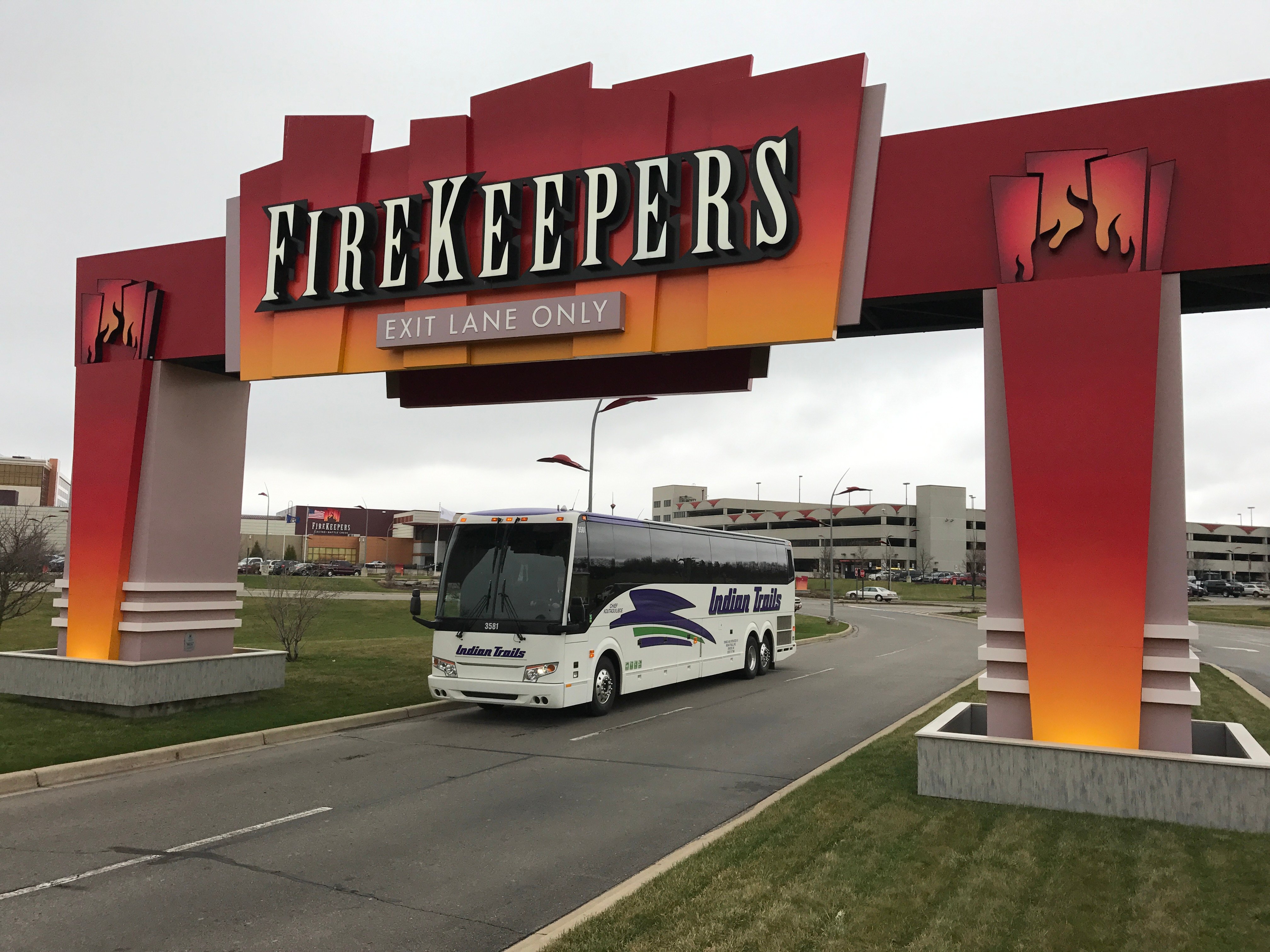Bus trips for seniors offer a unique blend of adventure, relaxation, and social interaction. From scenic coastal drives to historical city explorations, these journeys cater to diverse interests and mobility levels, providing enriching experiences for older adults. This guide delves into the planning, logistics, and considerations involved in ensuring a safe, comfortable, and memorable trip.
We explore various trip types, highlighting the advantages and disadvantages of each. We’ll also cover essential aspects like accessibility, health and safety, budgeting, and creating a positive group dynamic. Whether you’re a seasoned traveler or planning your first senior group excursion, this resource aims to equip you with the knowledge and tools for a successful and enjoyable journey.
Types of Bus Trips for Seniors
The senior travel market is booming, with bus tours offering a convenient and affordable way to explore new destinations and create lasting memories. A variety of options cater to diverse interests and physical capabilities, ensuring a fulfilling travel experience for seniors. Careful consideration of trip type, duration, and special features is key to selecting the perfect adventure.
Categorization of Bus Trip Options for Seniors
Choosing the right bus trip depends on individual preferences and physical limitations. The following table provides a structured overview of common trip types, highlighting key features to aid in decision-making.
| Trip Type | Destination Examples | Typical Duration | Special Features |
|---|---|---|---|
| Day Trips | Local historical sites, scenic viewpoints, wineries | 8-12 hours | Easy packing, less time away from home, often includes meals |
| Multi-day Tours | National Parks, coastal routes, major cities | 3-14 days | More in-depth exploration, opportunity for relaxation, often includes accommodation and some meals |
| Historical Tours | Gettysburg, Colonial Williamsburg, Civil War battlefields | Variable, often multi-day | Guided tours by experts, visits to historical sites, educational focus |
| Scenic Tours | Coastal highways, mountain ranges, national parks | Variable | Breathtaking views, opportunities for photography, relaxing pace |
| Themed Tours | Wine country tours, culinary tours, garden tours | Variable | Focus on specific interests, opportunities for tasting and hands-on experiences |
Examples of Unique Bus Trip Itineraries for Seniors
Several tour operators specialize in crafting unique itineraries tailored to the interests and physical capabilities of senior travelers. For example, a “Grand Canyon and Route 66 Adventure” might combine a multi-day tour of the Grand Canyon National Park with a scenic drive along historic Route 66, incorporating shorter walking distances and comfortable accommodations. Alternatively, a “Coastal California Charm” tour could focus on relaxed exploration of charming coastal towns, featuring leisurely strolls along the beach and visits to local artisan shops.
These itineraries often include options for optional activities to cater to individual preferences.
Advantages and Disadvantages of Different Bus Trip Types for Seniors
The suitability of a bus trip for a senior traveler depends on several factors. Multi-day tours offer a more immersive experience but require more planning and physical stamina. Day trips provide a less demanding alternative, but offer less time for exploration. Cost varies greatly depending on the length and features of the trip. Accessibility is another crucial consideration; some tours may be better suited to individuals with limited mobility than others.
The pace of the trip is also an important factor; some seniors prefer a slower, more relaxed pace, while others prefer a more active itinerary. For example, a multi-day tour might include longer travel days, while a day trip allows for a quicker return home. A slower-paced trip to a nearby historical site would offer a gentler experience compared to a fast-paced tour covering multiple cities in a week.
Get the entire information you require about best trips for seniors on this page.
Planning and Booking Bus Trips for Seniors
Planning a successful bus trip for seniors requires meticulous attention to detail, ensuring a safe, comfortable, and enjoyable experience for all participants. This involves careful consideration of various factors, from destination selection to booking accommodations and transportation. Effective planning minimizes potential issues and maximizes the overall enjoyment of the trip.
Choosing a Destination and Trip Type
Selecting the right destination is crucial. Consider factors such as accessibility, climate, and the interests of the senior travelers. Destinations should offer a variety of activities suitable for varying levels of mobility and energy levels. For instance, a coastal town with gentle walking paths and scenic views might be preferable to a mountainous region with strenuous hikes.
Popular choices often include destinations with historical significance, beautiful natural landscapes, or vibrant cultural scenes, but always keeping accessibility in mind. The trip type should align with the group’s preferences – a relaxing getaway, a historical tour, or a themed excursion.
Creating a Detailed Itinerary
A well-structured itinerary is essential for a smooth trip. This document should Artikel daily activities, transportation schedules, meal times, and accommodation details. Clear and concise information prevents confusion and ensures participants are well-informed. For example, a sample itinerary might include specific times for departure and arrival, details of included meals, and clear descriptions of planned activities with estimated durations.
Providing maps or visual aids can also be helpful.
Booking Transportation and Accommodation
Secure reliable transportation that caters to the needs of seniors. This may involve chartering a motor coach equipped with ample space, comfortable seating, restrooms, and potentially wheelchair accessibility features. Accommodations should be chosen based on accessibility, comfort, and proximity to planned activities. Hotels or resorts offering senior-friendly amenities, such as elevators, accessible rooms, and grab bars, are ideal.
Confirm all bookings well in advance to secure preferred options.
Essential Considerations Checklist for Booking
Before booking, a comprehensive checklist ensures all bases are covered. This checklist should address:
- Accessibility: Confirm wheelchair accessibility on the bus and at all locations (hotels, attractions).
- Health Needs: Gather information on participants’ medical conditions and medications. Consider proximity to medical facilities and emergency services.
- Comfort: Choose a bus with comfortable seating, climate control, and sufficient legroom. Select accommodations with comfortable beds and accessible bathrooms.
- Insurance: Ensure adequate travel insurance that covers medical emergencies and trip cancellations.
- Emergency Contacts: Collect emergency contact information for all participants and have a designated point person for the trip.
- Dietary Restrictions: Account for dietary restrictions and allergies when arranging meals.
Sample Senior-Friendly Bus Trip Itinerary: Coastal Getaway, Bus trips for seniors
This example showcases a three-day trip:
| Day | Activity | Transportation | Accommodation | Meals |
|---|---|---|---|---|
| 1 | Travel to Coastal Town; Check-in to Hotel | Motor Coach | Ocean View Inn (accessible rooms available) | Lunch on the bus; Dinner at hotel restaurant |
| 2 | Morning: Guided walking tour of historic district; Afternoon: Relaxing beach time | Walking; Hotel shuttle | Ocean View Inn | Breakfast at hotel; Lunch at seaside cafe; Dinner at hotel |
| 3 | Morning: Visit local museum; Afternoon: Departure | Hotel shuttle; Motor Coach | N/A | Breakfast at hotel; Lunch on the bus |
Accessibility and Comfort on Bus Trips for Seniors

Ensuring safe and enjoyable travel for senior citizens requires careful consideration of accessibility and comfort features on tour buses. The aging population’s diverse needs necessitate a proactive approach from tour operators to provide inclusive and comfortable travel experiences. This includes addressing mobility limitations and enhancing overall comfort during potentially long journeys.Accessibility features are paramount for seniors with mobility challenges.
These features not only ensure safe boarding and disembarking but also contribute to a more relaxed and enjoyable trip. Without adequate accommodations, seniors may face unnecessary difficulties and potential risks, ultimately hindering their participation in group travel. Therefore, understanding and prioritizing these features is crucial for promoting inclusive tourism for this demographic.
Bus Accessibility Features for Seniors with Mobility Challenges
Several key features contribute to accessible bus travel for seniors with mobility challenges. These features are designed to reduce physical strain and enhance safety. For example, buses equipped with ramps or lifts eliminate the need for seniors to navigate steps, preventing potential falls or injuries. Wide aisles and strategically placed grab bars provide additional support and stability while moving around the bus.
Designated seating areas near the exits ensure easy access for those who may need to disembark quickly. Furthermore, the availability of wheelchair securement systems guarantees safe transportation for wheelchair users. These elements combined create a significantly more accessible and safer travel environment.
Comfort and Convenience Features for Senior Travelers
Beyond accessibility, numerous comfort features can significantly enhance the senior travel experience. Comfortable seating with adequate legroom and adjustable headrests are essential for long journeys, reducing fatigue and discomfort. Climate control systems allow seniors to maintain a comfortable temperature throughout the trip. Sufficient lighting and easy-to-read signage improve orientation and navigation within the bus. Rest stops at regular intervals are also crucial for seniors who may need more frequent breaks.
Finally, the availability of onboard restrooms ensures convenience and avoids potential discomfort for seniors with limited mobility or medical conditions.
Questions Seniors Should Ask Before Booking a Bus Trip
Before committing to a bus trip, seniors should proactively inquire about specific accessibility and comfort features. They should confirm the presence of ramps or lifts for boarding, the availability of designated seating near exits, and the width of aisles. It’s also vital to inquire about the presence of grab bars, the type of seating, and the amount of legroom.
Further questions should cover the climate control system, the frequency and duration of rest stops, and the availability of onboard restrooms. By asking these questions, seniors can ensure that the chosen trip meets their individual needs and preferences, contributing to a positive and stress-free travel experience.
Planning a bus trip for seniors requires careful consideration of several factors, but the rewards are immeasurable. The opportunity to explore new places, connect with fellow travelers, and create lasting memories makes the effort worthwhile. By understanding the nuances of accessibility, health considerations, and budgeting, you can ensure a safe, enjoyable, and enriching experience for all participants. Remember to prioritize comfort, convenience, and the unique interests of your senior travelers to craft a truly unforgettable journey.


